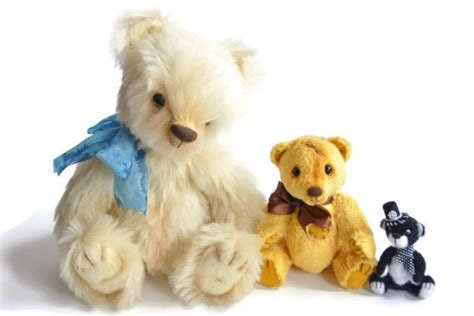CEN Associate, Professor Emily Farran, is the Developmental Psychology lead in the School of Psychology at the University of Surrey, and director of the Cognition, Genes and Developmental Variability lab (CoGDeV). One of her particular research interests is spatial cognition. In this blog, she introduces the concept and goes on to give heaps of useful pointers for parents and teachers on how to cultivate this foundational skill.
Spatial ability involves being aware of the location and dimensions of objects and their relationships to one another. It is core to everyday living (e.g., giving directions, or packing a suitcase). Research from my group and others has shown that it is also a strong predictor of a person’s mathematics and science abilities – those who perform well on spatial tasks show strong science and mathematical abilities. Despite the everyday importance of spatial ability, spatial thinking is given little emphasis within the National Curriculum, particularly when compared to the importance placed on literacy skills. However, there are plenty of ways in which parents and teachers can help their children to think spatially. Children who learn to think spatially will reap the benefits in their mathematics and science learning.
Spatial thinking in the classroom
Understanding science and mathematics depends heavily on being able to use, understand and co-ordinate models, read diagrams, rearrange formulae and interpret representations at different scales. Mathematics requires an understanding of shape, symmetry and numerical relationships, all of which require spatial skills, whilst the core problem solving and interpretation skills that are drawn upon in science require visualization, a key spatial skill.
Top tips for parents
Enlighten your child to the spatial aspects of the world by introducing spatial activities during your child’s normal day that will support and encourage their spatial thinking.
- Help them to order their teddies or toys by size and refer to the toys using size words such as small, medium and large. You can also use hand gestures to
 demonstrate the difference between small, medium and large. Children will enjoy imitating your gestures during the game. Why? Gesture uses space to supplement the information provided by words. This helps children to learn new spatial words.
demonstrate the difference between small, medium and large. Children will enjoy imitating your gestures during the game. Why? Gesture uses space to supplement the information provided by words. This helps children to learn new spatial words. - Books like “Zoom” and many of the “Twirlywoos” books are good for introducing spatial concepts and spatial language to children. Aim to use spatial words such as “in”, “on”, “out”, “between”, “smaller” and “bigger” when discussing the pictures in books with your child. Children love talking about the pictures in books – they will enjoy getting involved in the story telling. Why? Children who hear more spatial language as toddlers have stronger spatial skills when they start school. In turn, stronger spatial language associates with better STEM performance.
- Point out to your child that they might be able to work out how to fit a jig-saw piece by imagining it rotating in their head. This is harder than trial and error techniques, but children will be delighted with this new skill! Why? This encourages visualisation, which is key to success in science and maths.
- Spatial thinking does not always have to be formally taught. Block play and jigsaws, as well as computer games like Tetris, encourage the development of spatial ability. Why? These sorts of toys and games, bolster skills such as understanding part/whole relationships, symmetry and measurement.
Top tips for teachers
Because spatial thinking isn’t a recognised part of the curriculum, teachers need to be able to identify opportunities when they can integrate it into their teaching.
- Terms like “between”, “through” and “separate” are difficult concepts within the primary school years, and the learning of these words can be embedded within mathematics and science teaching. Why? Children with stronger spatial language demonstrate stronger science and maths performance.
- Equally, teachers can introduce more sophisticated terms such as “slope” or “parallel”, and support their acquisition with gesture to enable children to visualise the concept. Why? Gesture provides an additional representation of the concept. When teachers use gesture, children show a learning benefit over and above teaching using speech alone.
- Teachers can point out to children when visualisation would be useful (i.e., imagining a process in your head). For example, in physics, ask children to imagine what happens to the push and pull forces of magnets when a magnet is rotated. Why? Children with stronger visualisation skills have stronger science and maths performance.
- Diagrams are useful tools, but teachers often need to teach children how to use a diagram, for example, helping children to understand the differences in scale of the elements of a life-cycle diagram. When asked to compare diagrams, children need to be taught to view them spatially aligned – it is easier to observe the similarities and differences between two molecules or two quantities if they are aligned. Why? Diagrams use space to show a set of information simultaneously. This contrasts to words, which are sequential in nature. Diagrams can make an otherwise abstract concept more concrete, such as when number lines are used to depict negative numbers.
- Teachers can encourage children to create their own diagrams in the form of sketches. Why? Sketching helps children to actively learn a concept in a spatial manner.
You can read more about Emily and her colleagues’ work on spatial cognition in these papers – looking at the relevance of spatial skills for science and maths
You can keep up to date with her work via her lab group cogdevlab.weebly.com and by following her on twitter @EKFarran
If you would like to understand more about the basic principles of how the brain works, then why not have a peruse of our new CEN resource howthebrainworks.science
